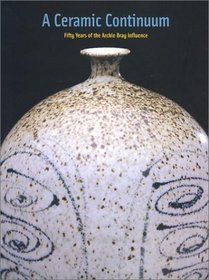Search -
A Ceramic Continuum: Fifty Years of the Archie Bray Influence
A Ceramic Continuum Fifty Years of the Archie Bray Influence
Author:
For the fifty years of its existence, the Archie Bray Foundation has been a continuous, unique, and important center for the arts. Archie Bray envisioned his pottery as a place where young artists could use the brickyard's clays and kilns, hone their skills, learn from each other, and develop a sensibility about the Foundation's signature produc... more »
Author:
For the fifty years of its existence, the Archie Bray Foundation has been a continuous, unique, and important center for the arts. Archie Bray envisioned his pottery as a place where young artists could use the brickyard's clays and kilns, hone their skills, learn from each other, and develop a sensibility about the Foundation's signature produc... more »
ISBN-13: 9780295981079
ISBN-10: 0295981075
Pages: 248
Edition: First Edition
Rating: ?
ISBN-10: 0295981075
Pages: 248
Edition: First Edition
Rating: ?
0 stars, based on 0 rating
Publisher: University of Washington Press
Book Type: Hardcover
Members Wishing: 1
Reviews: Amazon | Write a Review
Book Type: Hardcover
Members Wishing: 1
Reviews: Amazon | Write a Review
Genres:
- Arts & Photography >> Art >> Museums & Collections >> Museums >> Permanent Collection Catalogs
- Arts & Photography >> Art >> Other Media >> Ceramics




